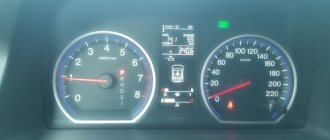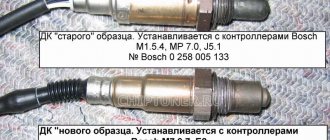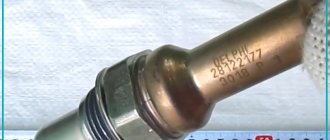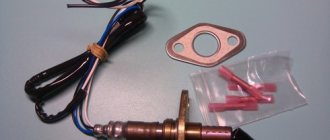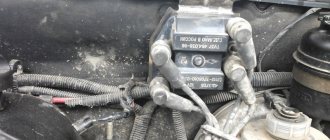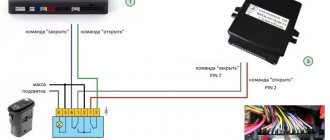Chevrolet Niva models (1990 – 1994 onwards) are equipped with one oxygen sensor (hereinafter referred to as OS). It is mounted on the metal body of the exhaust manifold.
Since 1995, the second generation Chevrolet Niva has been equipped with two oxygen controllers. Sensors are installed before and after the catalyst.
Oxygen sensor for Chevrolet Niva: original, analogues, price, articles
The main purpose of the DC is to assess the quantitative oxygen content in the exhaust gases and send data to the electronic control unit. The latter, based on the analysis, adjusts the position of the ignition angle. Thus, the combustible mixture becomes enriched and depleted.
Systematic operation, low-quality fuel, high temperature conditions are the main factors for premature failure of the mechanism.
The replacement process is not at all complicated, but requires care on the part of the repairman. However, here too, not many car owners are ready to buy original spare parts, preferring cheaper analogues.
So-called “fake devices” are installed instead of standard sensors. After 100 - 130 thousand km. The Chevrolet Niva catalyst becomes unusable, as evidenced by a number of signs. At the request of the client, the service station technicians remove (cut out) the standard catalyst from the exhaust system and replace it with a “dummy”.
To prevent the electronic control unit from identifying a system error, the lambda probe is replaced with one of the following types of decoys:
- Mechanical;
- Electronic.
Electric snag
The emulator has a microprocessor that corrects the signal for the ECU. The latter “believes” that the sensor is working and passes the data without interpreting it as an error.
In fact, there is no longer a catalyst in the design; instead, a section of the exhaust pipe is welded in.
The cost of the emulator varies from 1,500 rubles, which is 85–90% of the price of a new recreation center. Unlike a standard controller, the emulator has an unlimited service life.
| After catalyst 0258045197 | From 1800 |
| Fion | From 1400 - 1500 |
| ZVT | From 1400 - 1500 |
| Krayd | From 1400 - 1500 |
| HW-QNT | From 1400 - 1500 |
| Metal spacer | 250-330 |
| Electronic emulator | From 1600 |
| *prices are as of May 2021 | |
Replacing oxygen concentration sensors
Oxygen sensors need to be replaced after 75 thousand km of vehicle mileage.
We unscrew the sensors when the engine has cooled down.
Disconnect the negative terminal of the battery.
To replace the control sensor, in the engine compartment, press the lock of the wire block and disconnect it.
Disconnect the plastic holder of the sensor wiring harness from the bracket
Use a 22 key to unscrew the sensor.
We remove the sensor from the engine compartment
If the sensor is very stuck and cannot be unscrewed with an open-end wrench, then if you are replacing the sensor, you can cut the sensor wires with side cutters and unscrew them with a spanner.
You can also disassemble the wiring block if the sensor cannot be replaced.
To replace the diagnostic oxygen sensor, pry from the bottom of the car with a screwdriver and disconnect the wire holder from the protective casing of the wire blocks.
Using a 10mm wrench, unscrew the two nuts.
Remove the protective casing with wire blocks
We remove the wire blocks from the protective casing
We press the block clamp, disconnect the wiring harness blocks
Use a 22 key to unscrew the sensor.
Removing the diagnostic sensor
Oxygen concentration sensor
When installing the sensor, do not allow dirt and grease to get on the pads and the sensor itself.
We install the sensors in reverse order.
What is it for and where is it located?
The Niva can be equipped with one or two oxygen sensors. The first sensor monitors the oxygen content in the exhaust gases from the engine. Thanks to it, the ECU adjusts the supply of the fuel mixture to the engine cylinders. The lambda probe is the main element in the oxygen control chain. In a Chevrolet Niva, there is an oxygen sensor on the engine exhaust manifold in front of the catalyst.
The second sensor shows the amount of oxygen after the catalytic converter and sends a signal to the controller. Breakage or improper operation of the probes leads to increased fuel consumption while the Niva is moving. Also, uncontrolled operation of the propulsion system increases emissions of hydrocarbons, nitrogen oxides, soot and other harmful elements into the environment.
Signs and causes of sensor malfunction
According to statistics, oxygen sensors fail gradually, so you can identify its malfunction if you pay attention to the following “symptoms” in time:
- The idle speed began to drop or “float”.
- The car jerks, and after starting the engine, popping noises uncharacteristic of the engine are heard.
- The engine power has decreased and when you press the gas pedal there is a slow response.
- The engine overheats greatly and fuel consumption has increased.
- The smell in the exhaust pipe has changed (exhaust gases have become more toxic).
And also interesting: Expedition racks Niva 2121 buy in Balashikha in the online store
